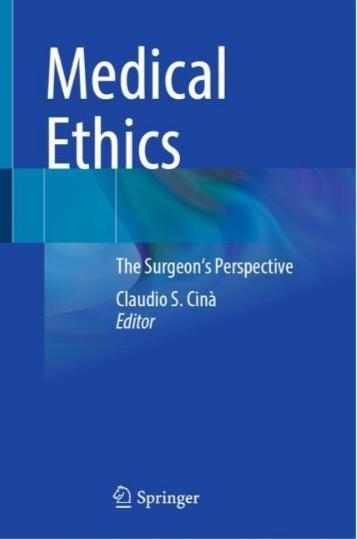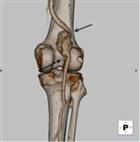A volume that brings together the experience and reflection of authors committed to ensuring the ethical practice of surgery in a complex time: an era in which technological innovation accelerates, social and individual expectations grow, and the surgical act is no longer the solitary expression of a single individual, but the mature outcome of a multidisciplinary team.
A shared contribution that places responsibility, rigor, and humanity at the heart of contemporary surgical practice. https://tidd.ly/4pOL3Aj
Utenti online: 1
 Change language
Change language
Objectives. The objective of this work is twofold: to report the feasibility and technique of treating popliteal artery aneurysms (PAA) with a new stent made of nitinol rings externally supported by thin polyester (ANACONDA limbs); and to present a systematic review and metanalysis of the literature.
Background. PAA are the most common peripheral aneurysms. Endovascular repair is an established modality of treatment for abdominal aortic aneurysms. It is therefore reasonable to expect its application to other less common aneurismal conditions, including isolated iliac and popliteal artery aneurysms (PAA). There are however essential differences between aortic aneurysms and peripheral aneurysms: smaller arterial caliber, mobility of the arterial segment, associated occlusive disease, and devices that have not been specifically designed for peripheral applications. Due to these differences, results obtained in abdominal aortic aneurysms cannot be extrapolated to peripheral aneurysms. The attraction of the endovascular repair for PAA is its minimally invasive nature. The main limitations of stents used in these settings are: short lengths, longitudinal and horizontal compliance mismatch; graft failure from angulation and movement at the joint level; and dislodgment.
Cohort study. In our cohort study we treated with ANACONDA limbs 14 PAA in 12 men, age 72 ± 3 years. The median ASA classification was 2.5. The length of artery covered was 147 ± 41mm. The PAA diameter was 31 ± 5 mm, 6 were symptomatic. One stent was used in 6 aneurysms, two in 7, and three in 1. The average stent diameter was 10 ± 1mm. The length of the proximal neck was 24 ± 6mm with a diameter of 9.8 ± 1.9, and length of the distal neck 23 ± 3 mm with a diameter of 8.7 ± 1.2 mm. In 6 aneurysms the stent crossed the knee joint. There was no mortality, and one stent occluded (primary patency 93% at 9±3 months). The median hospital stay was 1.7 days, time to independent ambulation was 3 hours and the time to climbing a flight of stairs was 1 day. We concluded that the use of Anaconda limbs for endovascular repair of PAA is feasible and safe.
The systematic review. The literature provides only case reports, case series, small cohort studies and one small randomized controlled trial. We created a cumulative summary of these studies using meta-analytic techniques appropriate for cohort studies and provide clinicians with information upon which to base the choice of treatment on a specific patient. Endovascular repair for PAA with suitable anatomy and good run-off can be considered safe, and medium term results appear comparable with those of open repair.
Objectives. The objective of this work is twofold: to report the feasibility and technique of treating popliteal artery aneurysms (PAA) with a new stent made of nitinol rings externally supported by thin polyester (ANACONDA limbs); and to present a systematic review and metanalysis of the literature.
Background. PAA are the most common peripheral aneurysms. Endovascular repair is an established modality of treatment for abdominal aortic aneurysms. It is therefore reasonable to expect its application to other less common aneurismal conditions, including isolated iliac and popliteal artery aneurysms (PAA). There are however essential differences between aortic aneurysms and peripheral aneurysms: smaller arterial caliber, mobility of the arterial segment, associated occlusive disease, and devices that have not been specifically designed for peripheral applications. Due to these differences, results obtained in abdominal aortic aneurysms cannot be extrapolated to peripheral aneurysms. The attraction of the endovascular repair for PAA is its minimally invasive nature. The main limitations of stents used in these settings are: short lengths, longitudinal and horizontal compliance mismatch; graft failure from angulation and movement at the joint level; and dislodgment.
Cohort study. In our cohort study we treated with ANACONDA limbs 14 PAA in 12 men, age 72 ± 3 years. The median ASA classification was 2.5. The length of artery covered was 147 ± 41mm. The PAA diameter was 31 ± 5 mm, 6 were symptomatic. One stent was used in 6 aneurysms, two in 7, and three in 1. The average stent diameter was 10 ± 1mm. The length of the proximal neck was 24 ± 6mm with a diameter of 9.8 ± 1.9, and length of the distal neck 23 ± 3 mm with a diameter of 8.7 ± 1.2 mm. In 6 aneurysms the stent crossed the knee joint. There was no mortality, and one stent occluded (primary patency 93% at 9±3 months). The median hospital stay was 1.7 days, time to independent ambulation was 3 hours and the time to climbing a flight of stairs was 1 day. We concluded that the use of Anaconda limbs for endovascular repair of PAA is feasible and safe.
The systematic review. The literature provides only case reports, case series, small cohort studies and one small randomized controlled trial. We created a cumulative summary of these studies using meta-analytic techniques appropriate for cohort studies and provide clinicians with information upon which to base the choice of treatment on a specific patient. Endovascular repair for PAA with suitable anatomy and good run-off can be considered safe, and medium term results appear comparable with those of open repair.
07/12/2012



